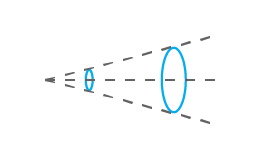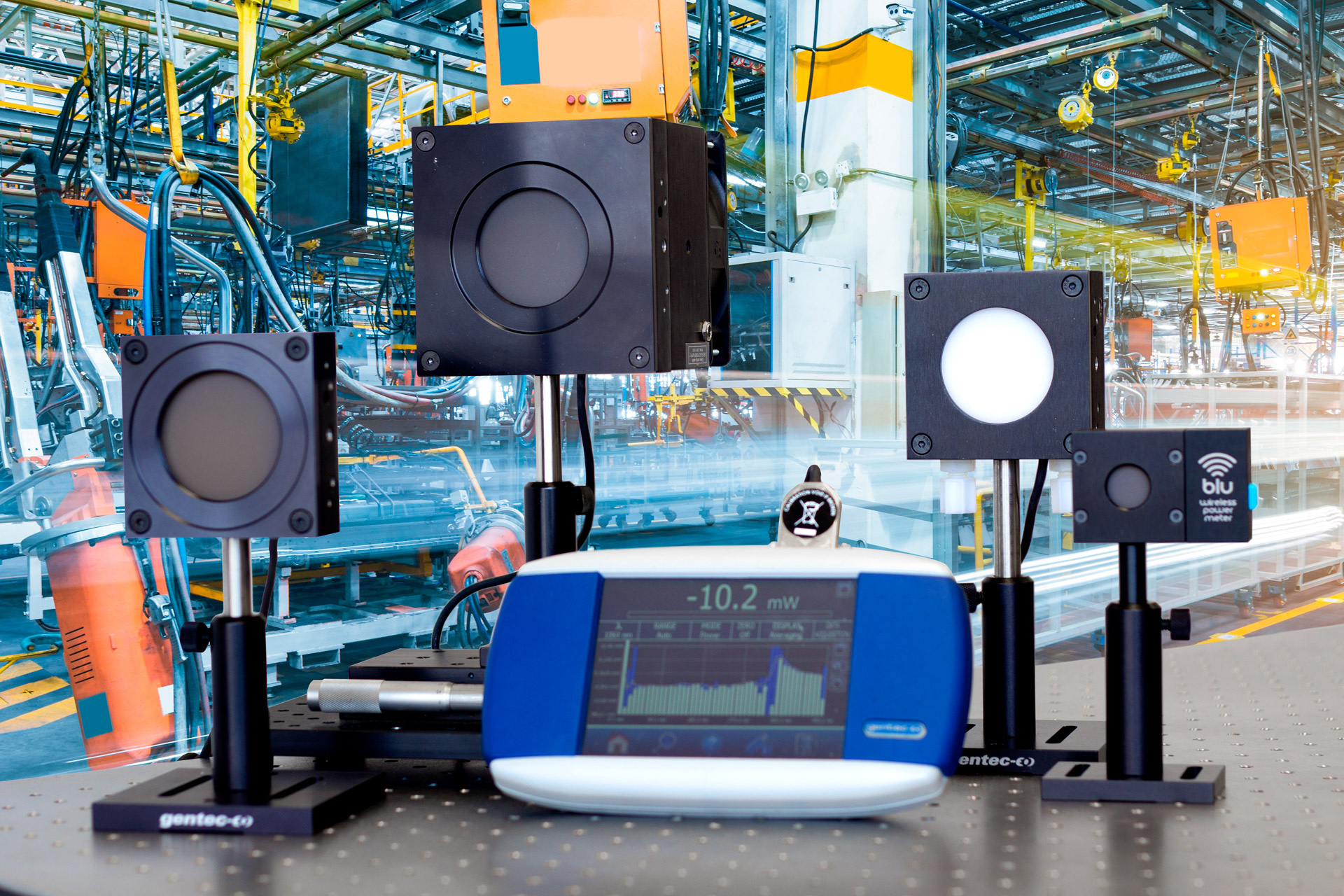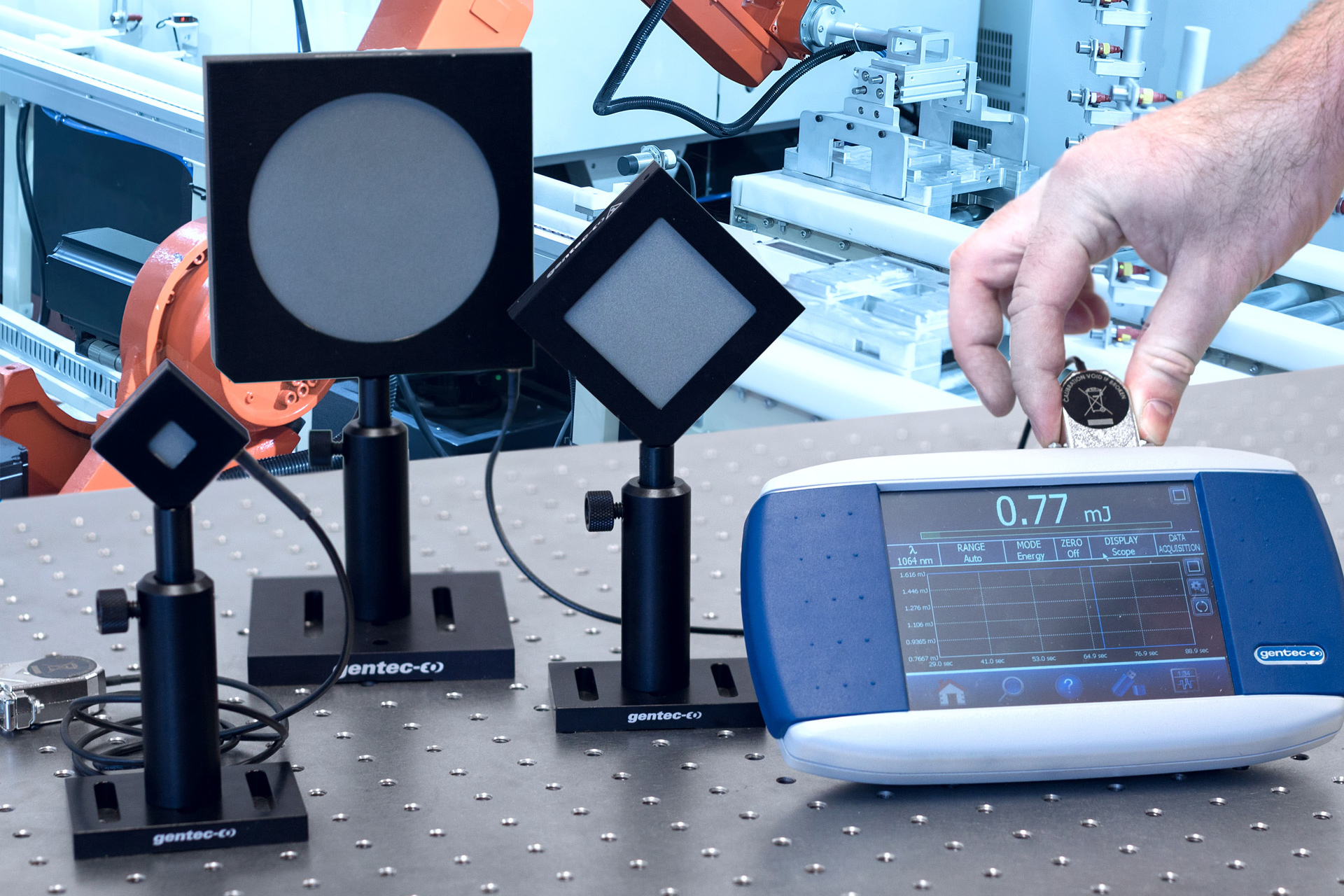Gaussian Beam diameter converter
Convert your aperture diameter from one laser beam diameter definition to another one.
How does the gaussian beam diameter converter work?
If you ended up on that calculator page, you probably already are aware that the diameter of a Gaussian beam always comes tied to a definition. You might still be wondering, why is that? Keep reading if you want to know more!
First, you must understand that a theoretical Gaussian beam (TEM₀₀) in three dimensions does not have clear edges. The mathematical function that describes the intensity profile of a Gaussian laser beam in space is defined from – infinity to + infinity, therefore, everywhere. But even though that statement is mathematically true, it’s rather useless and irrelevant in real-world conditions. Instead, we rely on various definitions based on relative intensity compared to its peak/center. Typically, where the laser intensity would have dropped from a significant amount and where it would have less or no tangible effect on the environment. The easiest to understand is FWHM, since the name says it all: Full width Half-maximum, meaning the full diameter of the mathematical function where the intensity has dropped by half. This one is easy to understand and convenient to work with, but there is a rather significant proportion of the total beam intensity that’s still outside of the said diameter. 1/e2 is a more commonly used definition and it represents the point where the intensity has fallen to about 13.5% of the maximum. Why 1/e2 you might ask, simply by mathematical simplification of the Intensity formulas below, in which, when the radius is equal to the beam radius, everything cancels out and you end up with 1/e2. For higher power laser, that 13.5% might still be a lot, so feel free to use the calculator above with % of maximum to set the exact intensity of the beam you agree to left out of the diameter.
Click to
enlarge

Formulas and limitation
If you ended up on that calculator page, you probably already are aware that the diameter of a Gaussian beam always comes tied to a definition. You might still be wondering, why is that? Keep reading if you want to know more!
First, you must understand that a theoretical Gaussian beam (TEM₀₀) in three dimensions does not have clear edges. The mathematical function that describes the intensity profile of a Gaussian laser beam in space is defined from – infinity to + infinity, therefore, everywhere. But even though that statement is mathematically true, it’s rather useless and irrelevant in real-world conditions. Instead, we rely on various definitions based on relative intensity compared to its peak/center. Typically, where the laser intensity would have dropped from a significant amount and where it would have less or no tangible effect on the environment. The easiest to understand is FWHM, since the name says it all: Full width Half-maximum, meaning the full diameter of the mathematical function where the intensity has dropped by half. This one is easy to understand and convenient to work with, but there is a rather significant proportion of the total beam intensity that’s still outside of the said diameter. 1/e2 is a more commonly used definition and it represents the point where the intensity has fallen to about 13.5% of the maximum. Why 1/e2 you might ask, simply by mathematical simplification of the Intensity formulas below, in which, when the radius is equal to the beam radius, everything cancels out and you end up with 1/e2. For higher power laser, that 13.5% might still be a lot, so feel free to use the calculator above with % of maximum to set the exact intensity of the beam you agree to left out of the diameter.
Right-click
to copy
Right-click
to copy







